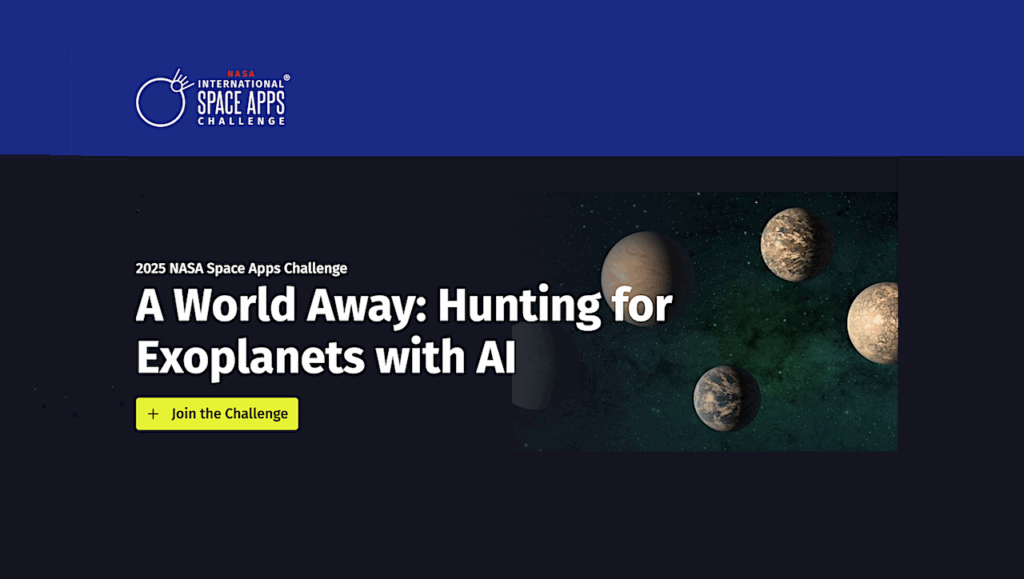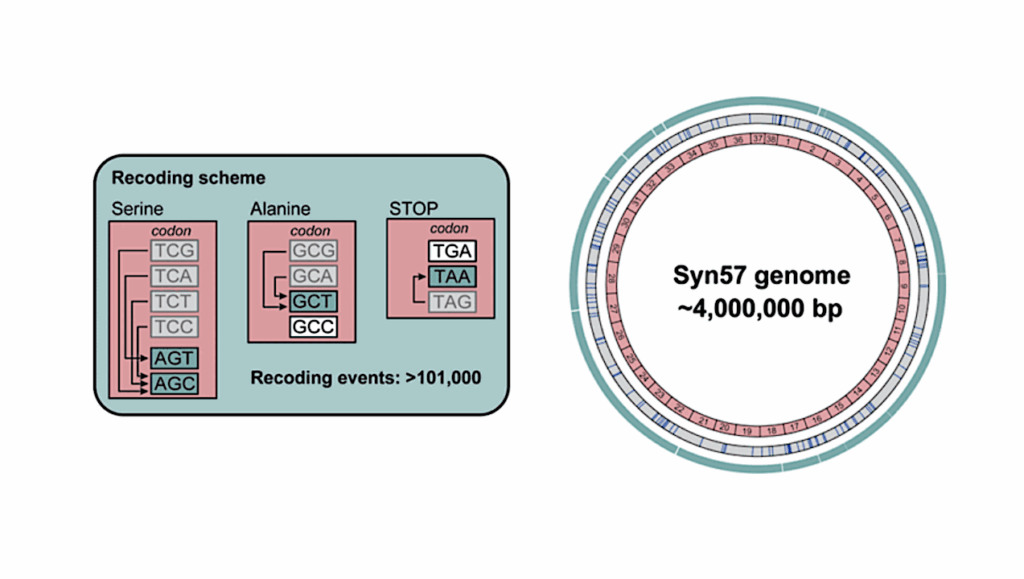Biological Research And Self-driving Labs In Deep Space Supported By Artificial Intelligence

Space biology research aims to understand fundamental effects of spaceflight on organisms, develop foundational knowledge to support deep space exploration, and ultimately bioengineer spacecraft and habitats to stabilize the ecosystem of plants, crops, microbes, animals, and humans for sustained multi-planetary life.
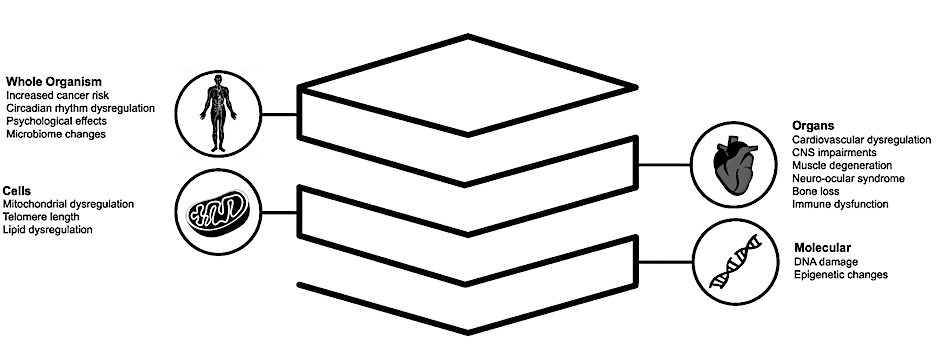
Multi-hierarchical levels of space biological research and data. Space biology research seeks to characterize the effects of spaceflight on living systems across hierarchical biological levels. Our current understanding of the biological responses to spaceflight incorporates multiple types of evidence at the cellular, tissue, and whole organism level. — q-bio.OT
To advance these aims, the field leverages experiments, platforms, data, and model organisms from both spaceborne and ground-analog studies. As research is extended beyond low Earth orbit, experiments and platforms must be maximally autonomous, light, agile, and intelligent to expedite knowledge discovery. Here we present a summary of recommendations from a workshop organized by the National Aeronautics and Space Administration on artificial intelligence, machine learning, and modeling applications which offer key solutions toward these space biology challenges.
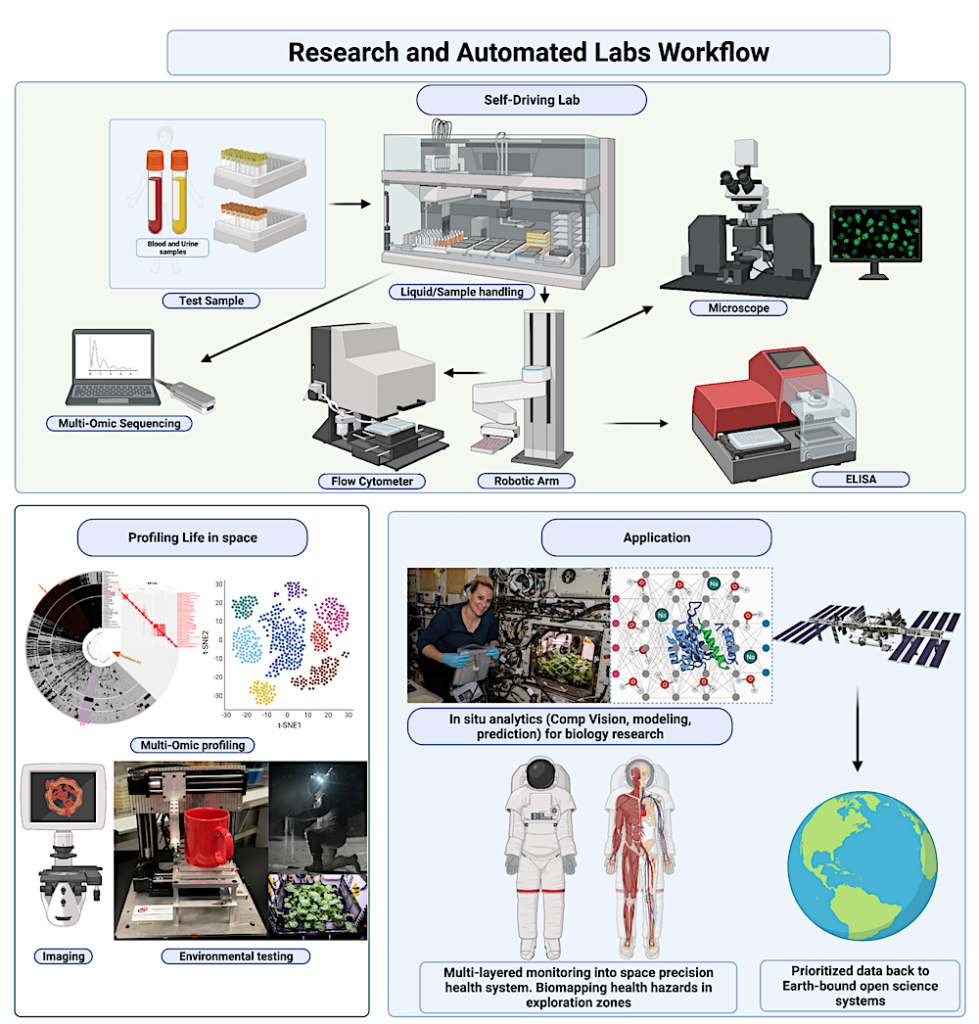
Self-driving labs are automated experimental platforms with AI closed-loop control for knowledge gain and experimental design. In spaceflown research programs, implementation of self-driving labs will aid comprehensive characterization of the effects of spaceflight on living systems, ultimately feeding research findings into applications such as in situ analytics, Earth-based open science research programs, and precision astronaut health systems. — q-bio.OT
In the next decade, the synthesis of artificial intelligence into the field of space biology will deepen the biological understanding of spaceflight effects, facilitate predictive modeling and analytics, support maximally autonomous and reproducible experiments, and efficiently manage spaceborne data and metadata, all with the goal to enable life to thrive in deep space.
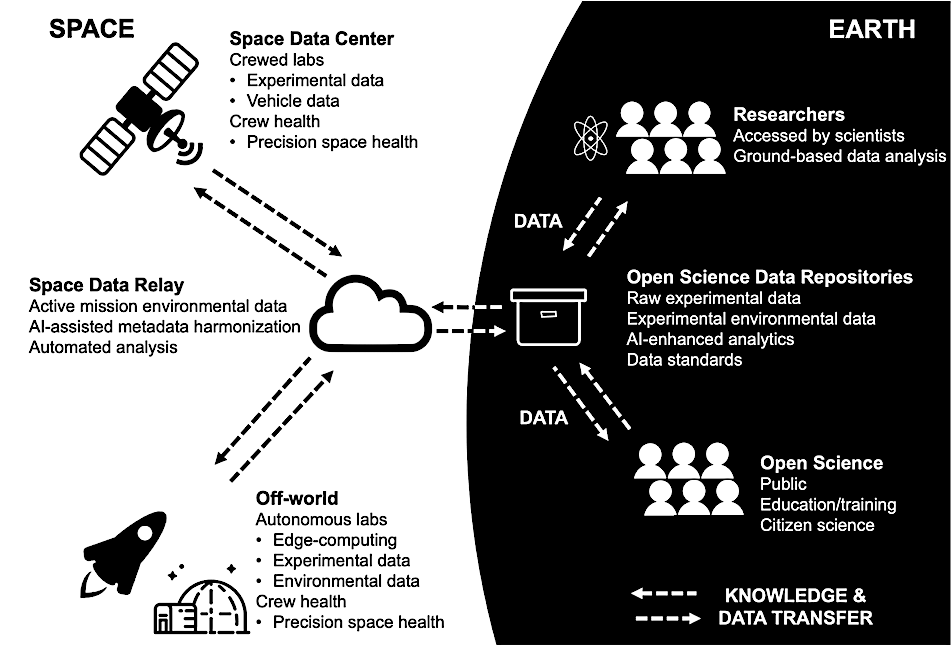
Deep space biological and biomedical data collection and transfer. The diagram shows the data and information flow in which a cloud-based data management environment serves as the nexus between space-based data and research and Earth-based researchers and analysts, enabling Open Science access to data and analytics and facilitating preparation of AI-ready datasets. — q-bio.OT
Comments: 28 pages, 4 figures
Subjects: Other Quantitative Biology (q-bio.OT); Machine Learning (cs.LG)
Cite as: arXiv:2112.12582 [q-bio.OT] (or arXiv:2112.12582v1 [q-bio.OT] for this version)
https://doi.org/10.48550/arXiv.2112.12582
Focus to learn more
Submission history
From: Lauren Sanders
[v1] Wed, 22 Dec 2021 05:18:26 UTC (4,520 KB)
https://arxiv.org/abs/2112.12582 (full article)
Astrobiology, space biology, space life science,




